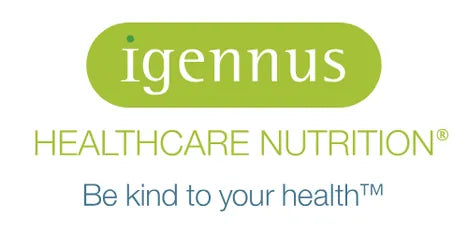Do you find that certain foods just don’t ‘sit well’? That you feel bloated, itchy, develop a headache or feel exhausted after meals but can’t quite put your finger on why? If this is your experience, and certainly if you experience numerous seemingly unrelated symptoms, then you may be experiencing histamine intolerance. Affecting around 1% of the population, histamine intolerance (unfortunately often confused with food allergy) is a condition in which the body fails to regulate the levels of histamine, a compound made by the body or introduced into the body via the diet.
Histamine exerts its role in numerous important bodily functions through binding to 4 different receptors found on different organs and tissues. Histamine naturally plays an inflammatory role in the body (in immune defence, for example), therefore it is important that levels are regulated and, in a healthy individual, histamine is broken down on a regular basis by two enzymes: diamine oxidase (DAO) and histamine N-methyltransferase (HNMT). Of the two enzymes, DAO is most important for degrading ingested histamine and therefore preventing it from getting into the circulation. For some individuals, a reduced capacity to break down histamine results in a histamine excess and, given histamine’s multiple actions at multiple sites throughout the body, a range of unpleasant, and often unrelated symptoms can arise.
What causes histamine intolerance?
There are some processes that create histamine while others degrade (destroy) it. When the body is working optimally, the overall system of synthesis and degradation is balanced. It is when histamine intake exceeds its breakdown that problems arise. Histamine can be absorbed from histamine-containing food, can be released by histamine-liberating foods and can also be produced by the bacteria that live within the gastrointestinal tract. Interestingly, individuals with pre-existing gut issues (such as IBS or IBD, for example) are more likely to have issues with excess histamine, as it relates to disruptions within the cells that line the gut (the mucosa). These disruptions can be caused, or exacerbated, by the use of drugs such as non-steroidal anti-inflammatory (NSAIDs like ibuprofen) or even antibiotics which can disrupt the delicate balance of our normal gut flora and increase the number of histamine-producing bacteria. Disruptions in the gut mucosa (often termed leaky gut) can allow histamine (if not degraded by the enzyme DAO) to enter the circulation where it is free to cause havoc around the body leading to the wide array of symptoms outlined in table 1. In addition, some people have a deficiency of DAO which can be related to genetics, by intake of drugs or other compounds that reduce its activity or simply because the body hasn’t been provided (fed) with the correct nutrients (cofactors) to optimise its function. If the dietary intake of histamine is high, and too much for DAO to cope with, these histamines build up in the body and can trigger a variety of symptoms. Thus, ingested histamine can become problematic, with sufferers often presenting with different tolerance levels and often reacting differently to different foods. There are, however, a number of well established ‘trigger’ foods such as fermented or highly processed products. Meat and fish (more so when not fresh) contain naturally high levels of the amino acid histidine which is converted to histamine by naturally occurring bacteria. Eating spoiled, or leftover foods can also contribute to the histamine burden via similar mechanisms. Certain vegetables such as tomatoes and spinach, are also identified culprits as they too are high in histamine, with some fruits that are high in benzoates contributing to histamine intolerance via their ability to ‘release’ histamine. Given the role histamine plays in gastric acid release, even the process of eating can trigger histamine release itself!
What do I do if I suspect I have histamine intolerance?
Keeping a food diary can be incredibly useful for identifying ‘culprit’ items (foods that supply histamine, release histamine or block histamine’s clearance as outlined in table 2). Having a history of antibiotic and/or proton pump inhibitors (to reduce the production of stomach acid), and/or regular use of NSAIDs can increase the risk of developing histamine intolerance by disrupting the cells within the gut that make DAO. Consuming a low nutrient diet (highly processed refined foods can, for example, be calorie dense but nutrient deficient) or having absorption issues (taking us back to the health of our gut!) can lead to nutrient deficiencies that can impede the degradation pathways. The key steps to recovery (which is possible) is to create an environment that rebalances the synthesis and degradation of histamine; working with an experienced nutrition practitioner can help to identify if you have a histamine intolerance and if so, the factors that may be contributing, to enable you to make the appropriate changes to help manage histamine load and improve symptoms.
Managing histamine intolerance
Reduce histamine burden
Adopting a low-histamine diet has been shown to be a therapeutically useful, simple and cost-free tool to decrease symptoms and increase quality of life in individuals with histamine-related symptoms. Because of the restrictive nature of a low-histamine diet, a qualified nutritionist can help ensure the diet is nutritionally adequate in terms of nutrients in general and, because diets are rarely free of histamine, can help ensure it is tailored to support histamine clearance. Generally, relief from symptoms is experienced within 4-6 weeks.
DAO activity analysis
Testing for DAO activity can be conducted relatively cheaply and non-invasively via a simple home kit. Testing DAO activity may be particularly useful when implementing a gut health protocol, leading to improved DAO production.
DAO supplements
While not available in the UK, DAO supplements (such as Daosin) can be purchased online and studies appear to support the reduction in histamine-related symptoms; however, DAO supplements increase DAO (and degrade histamine) specifically within the digestive tract and do not increase systemic DAO levels (and therefore may not be helpful for everyone).
Heal the gut!!
As DAO is produced within the cells of the gut, damage to the gut mucosa will disrupt normal DAO production (as well as digestive enzymes needed to digest and absorb nutrients). Targeted nutritional support can help optimise gut barrier function and help restore normal enzyme function. Vitamins A and D3 are particularly important for mucosal health, alongside glutamine, prebiotics and probiotics. Dysbiosis (which often occurs as a result of poor dietary choices, high levels of stress coupled with overuse of NSAIDs and antibiotics) can disrupt the diversity of the gut microbiota leading to an overgrowth of histamine-producing microbes.
Cofactors
When the body is low in B-vitamins, vitamin C and copper, histamine may not break down sufficiently to overcome symptoms of intolerance. Copper and vitamin C are crucial components of the DAO enzyme and B6 is a key cofactor that enables DAO to degrade histamine. Furthermore, B-vitamins are methylation co-factors required for HNMT activity. Our nutritionists would recommend supplementing with MULTIVITAMIN & MINERALS™ which provides 22 key essential vitamins & minerals in superior body-ready and active forms for enhanced absorption and utilisation. Our sustained slow-release system optimises blood nutrient levels for longer-lasting action.
Food sourced anti-inflammatory agents
Polyphenols are potent anti-oxidant/anti-inflammatory compounds found in (and isolated from) plants, some of which are very effective in managing histamine levels; these include quercetin, grape seed extract, pycnogenol and curcumin, which, alongside omega-3 EPA (from fish) can be particularly useful to include in a low-histamine diet. Polyphenols act directly on mast cells (histamine storage ‘vehicles’), reducing the release of histamine into the system and along with EPA are potent anti-inflammatory nutrients acting synergistically to dampen the inflammatory response initiated by histamine. Because curcumin has low bioavailability, our nutritionists recommend taking Longvida Curcumin, in combination with Pharmepa RESTORE pure EPA.
Summary
Histamine intolerance affects around 1% of the population and many sufferers can go for years without understanding the cause of their symptoms. Understanding what causes histamine intolerance and then identifying and removing the source of the problem is an important part of the healing process. If you suspect you (or someone you know) is affected by histamine intolerance, you can book a consultation with one of our qualified nutritionists via MyOnlineCLINIC.








